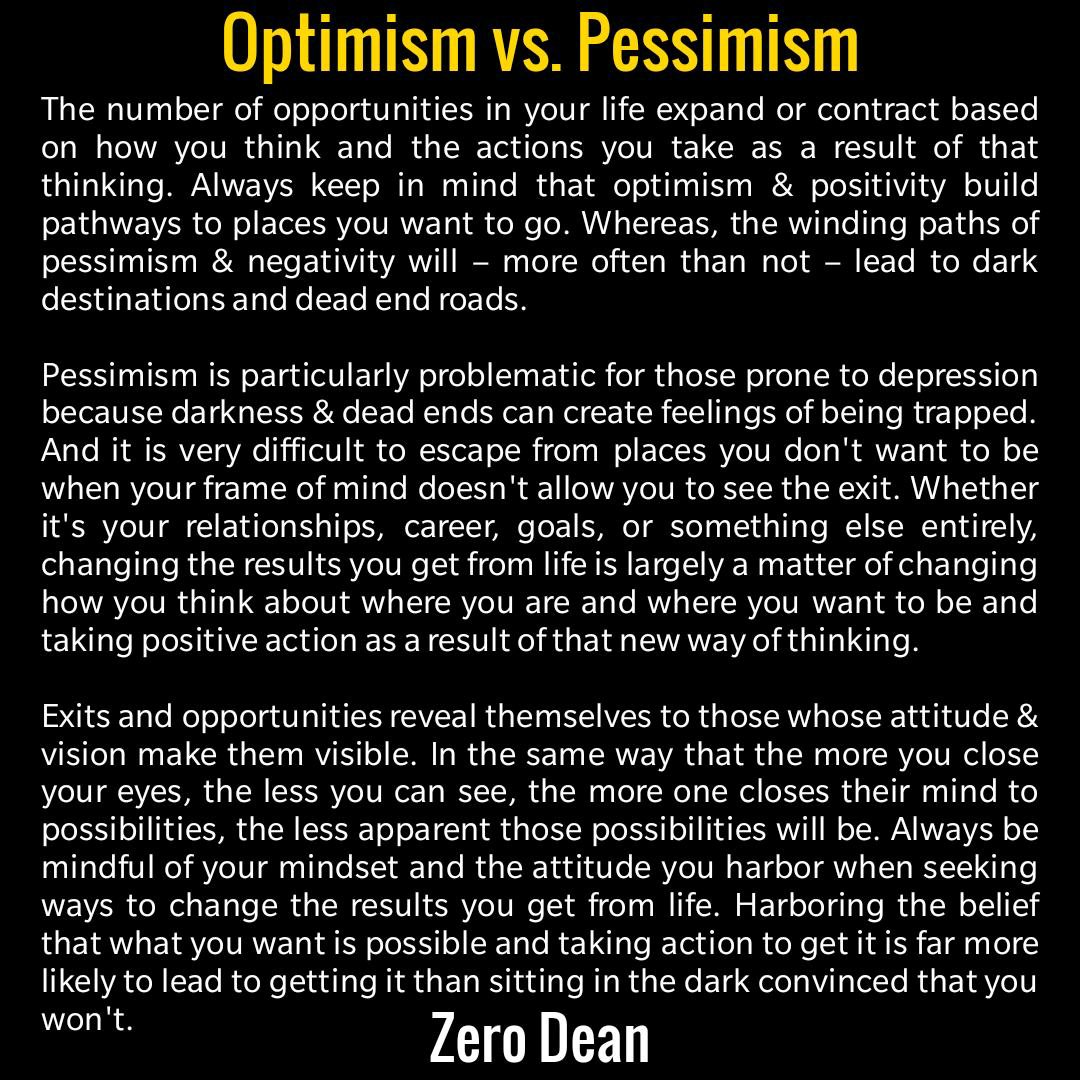
Individuals who experience adversity while pursuing a particular goal reassess the situation and the likelihood of success. The term expectancy refers to the probability a person attaches to the likelihood of attaining a given goal, and value refers to the value the person places on a particular goal.Īccording to the self-regulatory model, goals give meaning to people’s lives, but goals are subject to change, based on various forms of feedback. The expectancy-value approach assumes that behavior is goal directed. Carver view optimism and pessimism as personality traits and have derived a self-regulatory model based on expectancy-value theory to describe how these traits relate to human experiences. Optimism and Pessimism as Dispositional Traits

Counselors draw from various techniques when using these concepts in their clinical work, but cultural factors influence their use of interventions related to optimism and pessimism. However, under certain circumstances, optimism may be maladaptive. Generally, research indicates that optimism tends to be associated with a host of positive outcomes (e.g., higher levels of achievement and both mental and physical well-being), whereas pessimism tends to be associated with less favorable outcomes.

These constructs have been conceptualized as dispositional traits, as well as cognitive styles, and have been examined in relation to various outcomes.

Optimism refers to a hopeful disposition or a general belief that good things will happen, whereas pessimism describes a general expectation that bad things will happen.


 0 kommentar(er)
0 kommentar(er)
